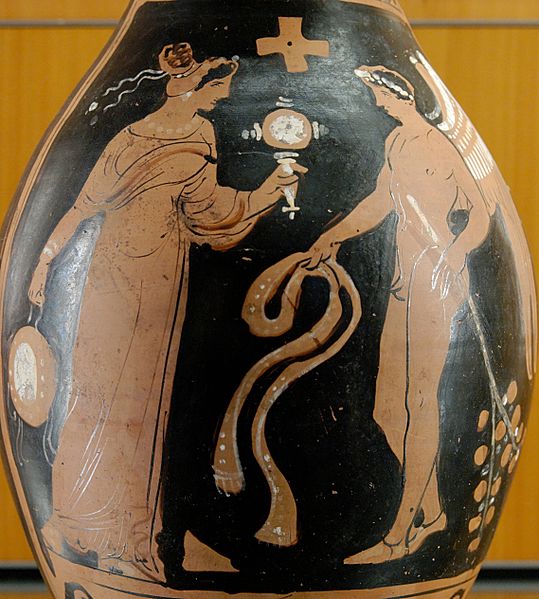In classical Roman religion, a genius loci was the protective spirit of a place. It was often depicted in religious iconography as a figure holding attributes such as a cornucopia, patera, or snake. Many Roman altars found throughout the Western Roman Empire were dedicated to a particular genius loci. The Roman imperial cults of the Emperor and the imperial house developed in part in connection with the sacrifices made by neighborhood associations (vici) to the local genius. These 265 local districts had their cult organised around the Lares Compitales, which the emperor Augustus transformed into Lares Augusti along with the Genius Augusti. The emperor's genius is then regarded as the genius loci of the Roman Empire as a whole.
Votive inscription to Jupiter Optimus Maximus and the Genius loci by the Signifer of Legio XXX Ulpia Victrix on behalf himself and his own legion during the consulate of Maternus and Atticus (185 AD)
In Roman religion, the genius is the individual instance of a general divine nature that is present in every individual person, place, or thing. Much like a guardian angel, the genius would follow each man from the hour of his birth until the day he died. For women, it was the Juno spirit that would accompany each of them.
Winged genius facing a woman with a tambourine and mirror, from southern Italy, about 320 BC
Bronze genius depicted as pater familias (1st century AD)
Head of a genius found at the Roman military camp Vindobona, 2nd century AD)
Genius of Domitian





